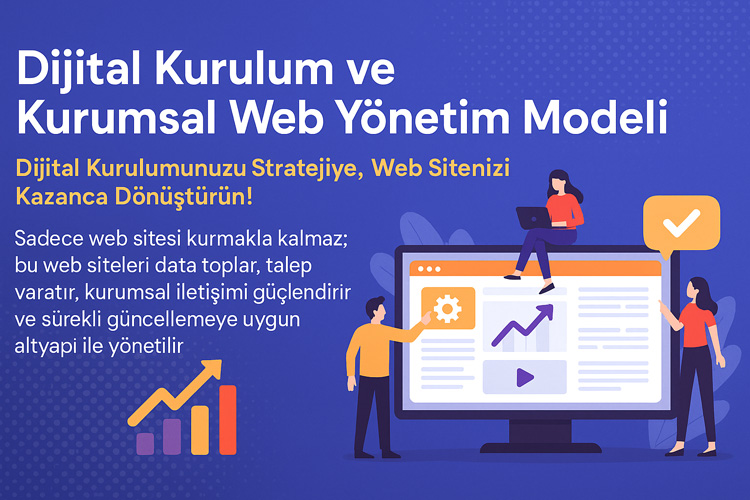SWOT Analysis is a method that evaluates internal and external factors that businesses and organizations use in their strategic planning processes. SWOT is also known as SWOT and includes Strengths, Weaknesses, Opportunities and Threats It consists of the initial letters of the words >. This analysis helps businesses understand themselves better and be more informed when making strategic decisions.
Strengths and Weaknesses represent inside elements of SWOT analysis. Strengths are the characteristics of a business that provide a competitive advantage and contribute to success. For example, a company may have a strong brand reputation or an innovative product line. On the other hand, weaknesses indicate areas where the business needs improvement. These could be factors such as missing resources, inadequate technology, or low employee motivation. Identifying these elements shows how the business can reinforce its strengths and improve its weaknesses.
Opportunities and Threats refer to external elements of SWOT analysis. Opportunities include the favorable conditions that exist in the external environment for the growth and development of the business. This could be factors such as new market trends, technological advances, or changing consumer needs. 🌱 Threats include external factors that can negatively affect the success of the business. Factors such as increased competition from competitors, economic fluctuations or legal regulations are considered threats. It is important for businesses to understand how they can seize these opportunities and take precautions against threats.

How to do a SWOT analysis? The first step is to conduct an internal evaluation to determine the strengths and weaknesses of the business. In this process, the current situation, resources, competencies and performance of the business are analyzed. Next, an external environmental assessment is made for opportunities and threats. At this stage, market conditions, competitive situation and environmental factors are taken into consideration. SWOT analysis results guide the business in creating its strategic plans. For example, it is possible to take advantage of opportunities by reinforcing strengths or to develop defensive strategies against threats by reducing weaknesses. 🛡️
The advantages of SWOT analysis include enabling the business to better understand its internal and external environment, supporting strategic decisions and providing the opportunity to recognize potential risks in advance. However, it is also important to be objective in the analysis and treat it as a dynamic process that is constantly updated. SWOT analysis, when done correctly and comprehensively, provides great benefits to businesses and creates a solid foundation for long-term success.
In this article, we discussed what SWOT analysis is, how to do it and why it is important for businesses. We emphasized the points to consider during the analysis process and explained how it can be used in strategic planning. SWOT analysis is a powerful tool that helps businesses better understand themselves and achieve their strategic goals. 🚀
İçindekiler
Adapte Dijital’in 10 yıllık deneyimiyle geliştirilen bu model, kurumsal web sitenizi sadece tasarlamakla kalmaz;
onu data toplayan, talep yaratan, kurumsal iletişim sağlayan bir dijital yönetim altyapısına dönüştürür.
Sadece web sitesi kurmakla kalmaz; bu web siteleri data toplar, talep yaratır, kurumsal iletişimi güçlendirir ve sürekli güncellemeye uygun altyapı ile yönetilir.
Why is SWOT Analysis Important?
SWOT Analysis plays an important role in the strategic planning process of a business or organization. SWOT is also known as SWOT and includes four key components: Strengths, Weaknesses, Opportunities and >Threats. This analysis helps businesses understand themselves better and be more informed when making strategic decisions. Here are a few reasons why SWOT analysis is so important:
1. Self-Awareness and Internal Evaluation: SWOT analysis allows businesses to evaluateinternal elements (strengths and weaknesses). Strengths are the characteristics of a business that provide competitive advantage and contribute to success. This could be a strong brand reputation, innovative products or a loyal customer base. Weaknesses are areas where the business needs improvement. This could be insufficient financial resources, low employee motivation or technological inadequacies. 🌟 This internal evaluation process helps businesses understand themselves better and identify areas for improvement.
2. Strategic Planning and Decision Making: SWOT analysis guides businesses in creating their strategic plans. It is possible to take advantage of opportunities by reinforcing strengths or to develop defense strategies against threats by reducing weaknesses. This enables businesses to achieve their long-term goals and helps them gain a competitive advantage. 🛡️ SWOT analysis is an important tool that supports strategic decisions and shapes the future of the business.
3. Understanding and Adapting to the External Environment: SWOT analysis helps businesses evaluate external elements (opportunities and threats). Opportunities include the favorable conditions existing in the external environment for the growth and development of the business. This could be new market trends, technological advances, or changing consumer needs. 🌱 Threats include external factors that may negatively affect the success of the business. Factors such as increased competition from competitors, economic fluctuations or legal regulations are considered threats. This external assessment helps businesses adapt to environmental changes and adjust their strategies accordingly.
4. Risk Management and Proactive Approach: SWOT analysis allows businesses to recognize potential risks in advance and take proactive measures against these risks. Identifying threats and developing strategies against them allows businesses to be better prepared for unexpected situations. This increases the sustainability of businesses and supports their long-term success. 🚀 Risk management helps businesses become more resilient by protecting their strengths and improving their weaknesses.
Consequently, SWOT analysis allows businesses to comprehensively evaluate their internal and external environments. This analysis guides the strategic planning process, supports risk management and increases the long-term success of businesses. SWOT analysis, when done correctly and comprehensively, provides great benefits to businesses and plays an important role in achieving strategic goals. 🌟
Elements of SWOT Analysis: Strengths and Weaknesses
SWOT analysis is an important method used by businesses and organizations in their strategic planning processes. SWOT is also known as SWOT and includes four key components: Strengths, Weaknesses, Opportunities and >Threats. In this article, we will examine in detail the strengths and weaknesses that are internal elements of SWOT analysis.
Strengths are the characteristics of a business that provide competitive advantage and contribute to success. Strengths include the capabilities, resources and positive characteristics of the business. For example, a strong brand reputation, innovative products, a loyal customer base and an effective distribution network may be among the strengths of the business. 🌟 These features enable the business to stand out in its market and gain a competitive advantage.
Adapte Dijital’in 10 yıllık deneyimiyle geliştirilen bu model, kurumsal web sitenizi kurumunuzu/markanızı anlatan, tanıtan, güven yaratan, talep oluşturan bir dijital yönetim platformuna dönüştürür.
Adapte Dijital, bu modelde bir konumlandırma ajansı olarak çalışır. Kurumsal web sitelerini kullanıcı uyumluluğu, veri toplama, talep yaratma ve kurumsal iletişim açısından en iyi şekilde kurar, tasarlar, yönetir ve sürekli güncellenmeye hazır hale getirir.
Identifying strengths helps the business to know itself better and use these advantages when determining its strategic goals. Strengths show in which areas the business is successful and how it can continue this success. For example, if a company has a strong R&D (Research and Development) department, this department can contribute to the development of innovative products and increase the business’s market share.
Weaknesses indicate areas where the business needs improvement. Weaknesses include deficiencies and weak points that can negatively affect the performance of the business. This may include factors such as inadequate financial resources, low employee motivation, use of outdated technology or ineffective marketing strategies. Identifying weaknesses shows how the business can make improvements in these areas and minimize potential risks. 🔧
Identifying weaknesses is an important step for the business to improve itself and gain competitive advantage. For example, if a company has weaknesses in customer service, it can increase customer satisfaction by providing training in this area and improving customer service processes. Thus, the business can become more competitive by strengthening its weaknesses.
Strengths and weaknesses of SWOT analysis represent internal elements of the business and play an important role in the internal evaluation process of the business. This assessment provides information about the current status, resources, competencies and performance of the business. While identifying strengths shows how the business can use these advantages in its strategic plans, identifying weaknesses reveals how the business can make improvements in these areas and manage potential risks.
In conclusion, the strengths and weaknesses of SWOT analysis are important elements that help businesses better understand themselves and achieve their strategic goals. 🌟 This internal evaluation process allows businesses to reinforce their strengths and improve their weaknesses. Thus, businesses become more competitive and successful. SWOT analysis, when done correctly and comprehensively, provides great benefits to businesses and plays an important role in strategic planning. 🚀

How to Perform SWOT Analysis?
How to Perform SWOT Analysis?
SWOT analysis is a tool that helps businesses develop an effective strategy by identifying their strengths, weaknesses, opportunities and threats during the strategic planning process. SWOT is also known as SWOT and includes four main components: Strengths, Weaknesses, Opportunities and >Threats. In this article, we will explain step by step how to do a SWOT analysis.
1. Step: Determine the Purpose
The first step when performing a SWOT analysis is to determine the purpose of the analysis. This clarifies what you want to achieve as a result of the analysis. For example, if you are considering launching a new product, your SWOT analysis should be conducted to support this decision. Your analysis purpose will help you ask the right questions and collect the necessary data. 🎯
2. Step: Evaluate Internal and External Elements
In a SWOT analysis, you need to evaluate the strengths and weaknesses, which are insider elements, as well as the opportunities and threats, which are external elements. Internal factors include factors that are under the control of the business. Strengths are the features of your business that provide a competitive advantage. For example, a strong brand reputation or an innovative product range. Weaknesses are areas where your business needs to improve; such as insufficient financial resources or low employee motivation. 🌟
External factors include factors that are beyond your business’s control. Opportunities include favorable external conditions for your business growth; such as new market trends or technological advances. Threats are external factors that can negatively affect the success of your business; such as increased competition or economic fluctuations. 🌱
3. Step: Collect and Analyze Data
You need to collect the necessary data for each SWOT component. This data can be obtained from your business’s internal sources and external environment. When evaluating internal elements, you can use sources such as financial reports, customer feedback and employee surveys. When evaluating external factors, you can benefit from sources such as market research, industry reports and competitive analysis. After collecting the data, analyze and list each component separately. 📊
4. Step: Create a SWOT Matrix
Create a SWOT matrix to visualize the data you collect. This matrix is arranged in the form of a square divided into four sections: Strengths, Weaknesses, Opportunities and Threats. In each section, place relevant data. This matrix provides guidance in determining the current status and future strategic plans of your business. 🌟
5. Step: Develop a Strategic Plan
After completing the SWOT matrix, develop a strategic plan using this data. Determine how you can take advantage of opportunities by reinforcing your strengths and how you can develop defensive strategies against threats by reducing your weaknesses. This creates a roadmap to help your business achieve its long-term goals. 🚀
In conclusion, SWOT analysis is a powerful tool that helps businesses better understand themselves and achieve their strategic goals. Assessing the strengths and weaknesses, which are insider elements, as well as the opportunities and threats, which are external elements, increases the competitive advantage of your business and ensures sustainable growth. 🌱
Our founder Gürbüz Özdem Digital Consultancy and Digitalization You can get detailed information by watching the video.
SWOT Analysis Application Areas and Examples
SWOT analysis is a powerful tool used for strategic planning in various sectors and fields. It allows businesses and organizations to evaluate internal and external factors. This method, also known as SWOT analysis, includes strengths, weaknesses, opportunities and threats It consists of em> elements. In this article, we will examine various application areas of SWOT analysis and real-world examples.
1. Marketing Strategies
SWOT analysis is frequently used in developing marketing strategies. For example, a cosmetics company might conduct a SWOT analysis before launching a new product. Strengths could be the brand’s strong reputation and large customer base. Weaknesses may be the high cost of new product development. Opportunities include the increasing demand for natural and organic products. Threats could be increased competition and market saturation. This analysis helps the company optimize marketing strategies and gain competitive advantage. 💄🌿
2. Business Development and Growth Plans
It is quite common for a business to use SWOT analysis when making growth plans. For example, if a technology company plans to enter a new market, it can evaluate the current situation by conducting a SWOT analysis. Strengths could be the company’s innovative technologies and strong R&D capabilities. Weaknesses could be limited financial resources or an inexperienced sales team. Opportunities may include emerging markets or new technological trends. Threats could be local competitive or regulatory barriers. This analysis helps the company shape its strategic plans and manage risks. 📈💡
3. Training and Development Programs
Educational institutions can also use SWOT analysis to evaluate training and development programs. For example, if a university plans to launch a new program, it can evaluate the success of this program by conducting a SWOT analysis. Strengths may include the university’s academic reputation and experienced teaching staff. Weaknesses could be the high cost of the program or inadequate infrastructure. Opportunities may include increased demand in certain areas or opportunities for cooperation with the business world. Threats may be competition from other universities or changing education policies. This analysis helps the university develop educational strategies. 📚🎓
4. Health Sector
SWOT analysis also has a wide application area in the healthcare sector. For example, if a hospital plans to introduce a new service, it can evaluate the impacts of this service by conducting a SWOT analysis. Strengths could be the hospital’s quality healthcare services and experienced healthcare professionals. Weaknesses could be insufficient resources or outdated technology. Opportunities may include health tourism or new medical technologies. Threats could include increased costs or regulatory changes. This analysis helps the hospital optimize its strategic plans. 🏥💊
Real Examples
McDonald’s, a fast food chain, conducts a SWOT analysis before launching a new product. Strengths are strong brand value and wide distribution network. Weaknesses may be unhealthy food image. Opportunities could be the increase in demand for healthy products. Threats may be competition from local restaurants and changing consumer preferences
Technology giants such as
Apple also conduct SWOT analysis before new product launches. Strengths are innovative technologies and loyal customer base. Weaknesses may be high price policies. There may be Opportunities, new markets and technological developments. Threats may be intense competition and rapidly changing technology.
In conclusion, SWOT analysis is an indispensable tool for strategic planning in various industries and application areas. This analysis helps businesses reinforce their strengths, improve their weaknesses, take advantage of opportunities and prepare for threats.
What Will Be Different in SWOT Analysis in 2024?
In 2024, SWOT analysis will be shaped by new trends and technological developments in strategic planning processes. Let’s examine how businesses can adapt SWOT analysis to gain competitive advantage in the changing business world.
1. Digitalization and Big Data Use
One of the biggest changes in SWOT analysis in 2024 will be the increase in digitalization and big data usage. Big data analytics will help businesses make more precise and data-driven decisions. For example, data such as customer behavior, market trends and competitive analysis will enable more accurate identification of strengths and weaknesses, as well as opportunities and threats. 🌐 Big data analytics will help businesses better understand their internal and external environment and make SWOT analysis more effective.
2. The Impact of Artificial Intelligence and Automation
Artificial intelligence (AI) and automation technologies will play an important role in SWOT analysis in 2024. By analyzing large data sets, AI can produce faster and more accurate results about strengths and weaknesses, as well as opportunities and threats. Automation can perform the repetitive tasks of SWOT analysis more efficiently, reducing human error and speeding up the analysis process. 🧠💻 The integration of artificial intelligence and automation will make SWOT analysis a more dynamic and constantly updated process.
3. Sustainability and Social Responsibility
In 2024, sustainability and social responsibility elements will become more prominent in SWOT analyses. Businesses will have to evaluate their environmental impact and social responsibility. While strengths include sustainable business practices and social responsibility projects, weaknesses may include factors such as environmental damage and failure to meet social expectations. 🌍 Opportunities may include increasing demand for green technology and sustainable products, while threats may include tightening environmental laws and social pressures
4. Global Economic Changes
Another important element to consider in the SWOT analysis in 2024 will be global economic changes. Factors such as post-pandemic economic recovery, supply chain issues and geopolitical developments will directly affect the strategic plans of businesses. In determining strengths and weaknesses, the ability of businesses to adapt to these global changes will come to the fore. 🌐 While opportunities include new markets and collaborations, threats may include economic uncertainties and trade wars
5. Hybrid Working Models and Digital Transformation
Hybrid working models and digital transformation will be among the important elements to be considered in SWOT analysis in 2024. Businesses will evaluate their remote working capabilities and digital infrastructure. Strengths include flexible working policies and advanced digital infrastructure, while weaknesses may include communication and collaboration issues. 💼 While opportunities may include digital transformation projects and innovative business models, threats may include cybersecurity risks and the digital divide.
As a result, trends such as digitalization, artificial intelligence, sustainability, global economic changes and hybrid working models will be decisive in the SWOT analysis in 2024. It will be critical for businesses to adapt to these changes and update their SWOT analyzes accordingly to gain competitive advantage. 🚀
Conclusion and Suggestions
SWOT analysis is a powerful tool that allows businesses to evaluate internal and external factors in their strategic planning processes. In 2024, new trends such as digitalization, artificial intelligence, sustainability, global economic changes and hybrid working models will be decisive in the SWOT analysis. Adapting to these changes and updating SWOT analyzes accordingly is critical for businesses to gain competitive advantage.
Adapte Digital, as a digital consultancy agency, offers unique support to businesses in adapting to these changing dynamics. Adapte Digital supports businesses in digital transformation processes, offering comprehensive solutions to identify strengths and improve weaknesses. Specializing in digitalization and big data analytics, Adapte Digital enables businesses to make data-driven decisions and thus helps them optimize their strategic plans. 🌐
Artificial intelligence and automation solutions offered by Adapt Digital enable businesses to make SWOT analysis a more dynamic and constantly updated process. These technologies allow faster and more accurate results about strengths and weaknesses, as well as opportunities and threats. Adapte Digital’s professional team uses these technologies effectively while shaping the strategic plans of businesses. 🧠💻
Adapte Digital, which also guides businesses on sustainability and social responsibility issues, helps businesses develop sustainable business models by evaluating their environmental and social impacts. Adapte Digital’s experts provide strategic recommendations for businesses to fulfill their environmental responsibilities and respond to social expectations. 🌍
Adapte Digital, which also supports businesses in adapting to global economic changes, creates strategic plans by taking into account factors such as post-pandemic economic recovery, supply chain problems and geopolitical developments. Adapte Digital’s comprehensive analytics approach enables businesses to respond to these changes quickly and effectively. 🌐
Adapte Digital, which guides businesses in hybrid working models and digital transformation processes, offers flexible working policies and advanced digital infrastructure solutions. In this way, it helps businesses improve their communication and collaboration processes and minimize cyber security risks. 💼
As a result, Adapte Digital Digital Consultancy Agency stands out as an excellent partner in the SWOT analysis and strategic planning processes of businesses. It helps businesses gain competitive advantage and achieve sustainable growth with the comprehensive solutions it offers on issues such as digitalization, artificial intelligence, sustainability, global economic changes and hybrid working models. 🌟 Collaborating with Adapte Digital ensures that your business is prepared for the future and achieves its strategic goals. 🚀


















































